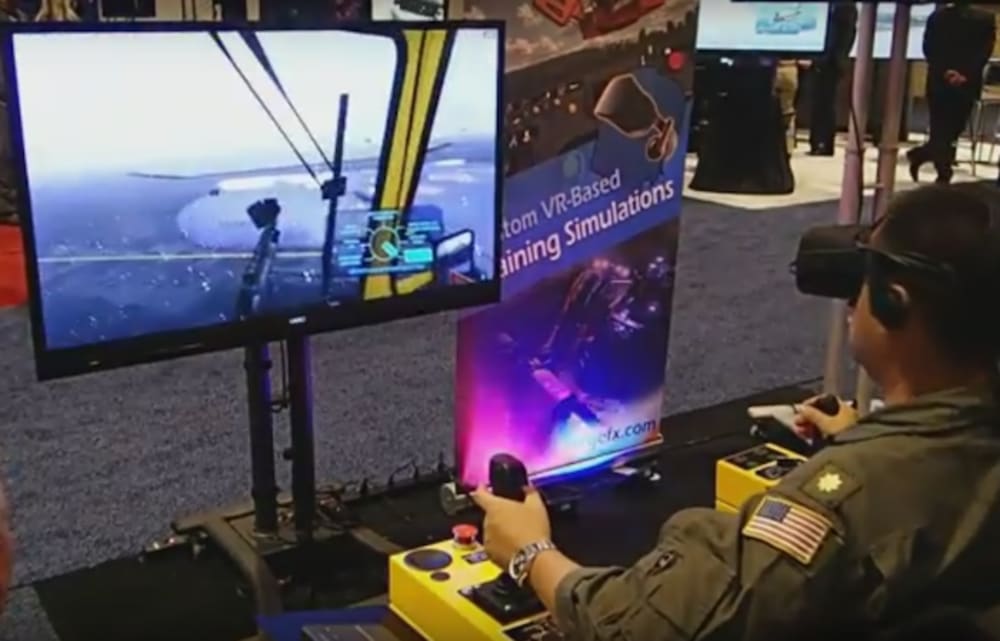The Virtual Reality Deicer Simulator puts you on the runway inside a deicing vehicle, either as a driver or a sprayer. We've developed our software to work and mimic the controls and movements of the actual enclosed cab deicing vehicle. The VR Deicer Sim base, houses the identical proportional joysticks used to control boom movement, truck maneuvering and sprayer control used in the real thing. Our software runs on a standard PC with an Oculus VR headset.
Inadequate removal of frost, ice or snow adhering to the wings, control surfaces, engine inlets or other critical surfaces of the aircraft can cause catastrophic failure and loss of life. The removal of frozen contaminants before takeoff is an FAA requirement - FAR 14 CFR 121.629. Operating heavy equipment around commercial and private aircraft in adverse weather is a complex operation. For environmental reasons, airports are required to collect and dispose of these expensive fluids. Adhering to arrival and departure times during adverse weather is critical to the airline industry. Since these conditions are seasonal, it’s difficult to maintain the training of current operators and train new operators during the “off season” months.
With our simulator, new and existing operators can actively train “out of season,” preserving and developing muscle memory, knowledge and procedures without the risk of damaging aircraft or wasting valuable fuel and deicing fluids. We've designed the VR Deicing Simulator to mimic boom control motion and fluid dynamics (viscous, hydrophilic, thermal) of the industry standard deicing fluids (Type I) and anti-icing fluids (Type IV). Since departure times are critical, airlines use multiple vehicles to deice so we’ve built the VR Deicing Simulator on a “multiplayer” platform. Operators can train as a team -i.e. up to 9 operators, 4 drivers and 4 sprayers and an observer with full headset communications working on the same aircraft. Once a training session is completed, an algorithm produces an efficiency/performance “grade” based on the selected parameters complete with graphics. These can also be printed to sustain the required documentation of the training procedure.
Each session is fully customizable with the following variables:
FAA’s established temperature ranges for calculating Hold Over Times (HOT Times)
Deicing Vehicles – 3
Aircraft – 18
Time Of Day – 4
Wind Speeds – 10
Wind Direction – 8
Precipitation type – 5
Aircraft engines “On” or “Off”
Operator Mode – “Single” “Double”
Video
Like this entry?
-
About the Entrant
- Name:Lance Adams
- Type of entry:teamTeam members:Lance Adams Jeff Walsh
- Patent status:none

